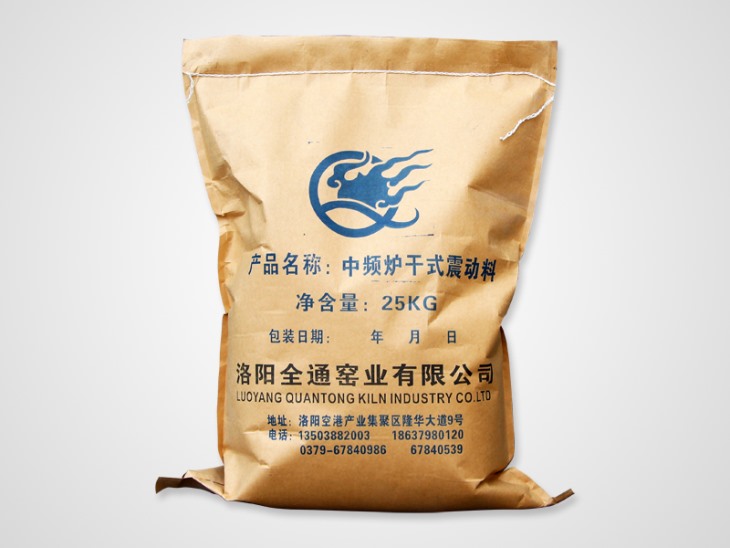How to use the furnace lining and how to build the furnace
Before dry knotting the furnace lining, first lay a layer of asbestos cloth in the insulation layer of the furnace coil, and flatten the layers of furnace lining materials when laying.
Knotted furnace bottom: the thickness of the furnace bottom is about 200mm-280mm, and the sand is filled in 2 to 3 times. When manually knotting, the density is not uniform everywhere, and the furnace lining after baking and sintering is not dense. Therefore, the feeding thickness must be strictly controlled. , the general sand filling thickness is not more than 100mm\/time, the furnace wall control
The system is within 60mm, and multiple people operate in shifts, with 4-6 people in each shift, each time tying knots for 30 minutes, and changing positions slowly around the furnace, using even force to avoid uneven density.
The crucible mold can be placed after the furnace bottom is knotted to the required height, and the crucible mold can be placed. In this regard, care should be taken to ensure that the crucible mold and the coil are concentric, and the upper and lower adjustment is straight. The 3 wooden wedges are clamped tightly, and the central hanging weight is pressed on.
Prevent the quartz sand from being displaced when the furnace wall is knotted.
Knotting the furnace wall: the thickness of the furnace lining is 90mm-120mm, add dry knotting material in batches, the cloth is uniform, the thickness of the filler is not more than 60mm, and the knot is 15 minutes (manual knotting) until it is flush with the upper edge of the induction coil. The crucible mold is not taken out after knotting, when drying and sintering
It plays the role of reaction heating. If you want to take out the crucible mold, wrap 2-3 layers of newspaper on the outer wall of the crucible mold before knotting the furnace wall and wrap it tightly with tape. After knotting, the furnace wall is heated to 900 degrees, and the crucible mold is quickly taken out after the newspaper is smoking. , Use an iron barrel with a height of 10-15 cm smaller than the diameter of the crucible mold and the height of the furnace mouth.
The iron pin is used as a reaction heating during drying and sintering.
Baking and sintering standards: In order to obtain the 3-layer structure of the furnace lining, the baking and sintering process is roughly divided into 3 stages: it is necessary to pay attention to the iron materials added in the furnace during baking and sintering. Iron pins and small iron materials must not be used. Add chunks of iron, pointed, toothed iron.
Baking stage: Separately, heat the crucible mold to 900 degrees Celsius at a speed of 200 for 20 minutes, 300 for 20 minutes, 400 for 20 minutes, and keep for 20 minutes, the purpose is to completely remove the moisture in the furnace lining.
Thorough sintering stage: high temperature sintering, the sintering structure of the crucible is the basis for improving its service life. The sintering temperature is different, the thickness of the sintered layer is insufficient, and the service life is significantly reduced.

Related News
- Introduction of construction method of ramming material in intermediate frequency furnace
- How to choose the material of furnace lining
- The difference between rammer and castable
- Application direction of intermediate frequency furnace refining
- Introduction to the construction method of dry ramming material
- Do you know the production process and control points of breathable bricks?
- The application of argon blowing technology at the bottom of the intermediate frequency furnace
- Method for prolonging service life of intermediate frequency furnace lining
- In addition to diffused breathable bricks, there are those types of breathable bricks
- What are the advantages of coil cement
- Introduction of Insulation of Coil Clay
- Common functions of coil cement of intermediate frequency furnace
- The method of improving the life of ladle breathable brick
- Causes of damage to ventilation bricks
- Selection of lining materials for intermediate frequency furnaces
- Matters needing attention in the knotting process of wear-resistant ramming material
- The composition characteristics of ramming material
- How to improve the temperature resistance of the intermediate frequency furnace lining
- Application and classification of breathable bricks
- How to improve the temperature resistance of intermediate frequency furnace lining


